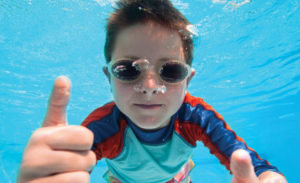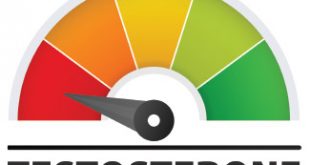 Pool season has officially begun! Swimming is great fun … but pools can be dangerous, especially if common-sense precautions aren’t followed.
Pool season has officially begun! Swimming is great fun … but pools can be dangerous, especially if common-sense precautions aren’t followed.
According to the National Safety Council, more than 3,700 people drowned in the U.S. in 2016, Not surprisingly, drowning deaths increase during the summer months. Although drowning can happen to anyone, these deaths affect babies and toddlers at much higher rates.
Drowning was the leading cause of preventable death for children age 1 to 4 in 2016.
One of the first things you need to know around pools is how to swim. It’s never too late to take swimming lessons. The YMCA is one of the biggest providers of swimming lessons in the U.S., and they provide classes for people of all ages, including full-grown adults! If you don’t know how to swim, don’t be embarrassed. Now’s the time to learn.
Even for those who know how to swim, drowing is still a threat. That’s why people are told to never swim alone. The buddy system can save your life! Swimming in areas covered by lifeguards – whether at the beach, the city pool, or swim club – is an excellent idea.
But remember that lifeguards are not babysitters. Parents must continue to watch their children at all times around the water. That’s especially good advice for parents of toddlers and little ones, who are attracted to water like steel to a magnet.
If your child will be visiting friends or relatives this summer, make sure you know in advance whether the home has a pool or if there’s one located close by. If so, be sure to talk with your child about water safety and the importance of having an adult nearby whenever swimming.
Even if there’s no pool nearby, it’s a good idea to ask if the parent or adult is planning to take your child swimming. If so, discuss pool safety.
Ensure that adults will be present actively supervising children in or near the pool. If there are multiple adults, assign one adult to be the “water watcher” – the one person whose responsibility it is to keep a close eye on pool activity. When there are many adults, it’s too easy to assume that someone else is watching, when they may not be.
Ask if the person who will be watching your child knows how to swim. This is important. Children should not be supervised in the pool by someone who is not able to rescue them. At least one adult should be trained in first aid and CPR. Knowing CPR can make the difference in a drowning incident. CPR classes are available through the Red Cross. First aid kits and life jackets/poles should be available should a rescue be necessary.
Physical barriers and considerations
Home pools should be surrounded on all sides with a fence that is at least four feet high. Higher is better. Keep gates to the pool area locked at all times (that includes doors from the home to the pool) to prevent children from wandering into the pool. Because it’s easy to forget, invest in gates that close and latch themselves automatically. Additional layers of protection, such properly fitted covers and alarms, can be effective barriers when the pool is not in use.
All pools and spas must have compliant drain covers to protect adults and children alike from entrapment. Drains have powerful suction that can have deadly consequences if not properly covered. Do not use pools that have flat, broken or missing drain covers.
In addition:
• Ensure your pool or spa meets local ordinances and codes
• Use non-slip materials on the pool deck, diving board and ladders.
• The steps of the pool ladder should be at least 3 inches wide, and the ladder should have handrails on both sides small enough for a child to grasp. There should be a ladder at both ends of the pool.
• Electrical equipment should be installed by a licensed electrician in accordance with local safety codes.
• Mark water depths conspicuously. Use a safety float line where the bottom slope deepens.
• For above-ground pools: Install sturdy guard rails around the pool deck. Look for rolled rims on the metal shell to be sure the rims do not present a sharp cutting edge if someone falls. The access ladder to the deck should be sturdy and without protruding bolts or other sharp edges. The access ladder should swing up to prevent children from unauthorized entry or should be easily removable for secure storage away from the pool area.
• Check the pool and equipment periodically for cleanliness and good maintenance. Cover all sharp edges and protruding bolts; repair rickety or broken ladders and railings. Replace non-slip materials when they wear out.
• Keep rescue devices and first aid supplies near the pool.
Information derived from NSC.org/National Safety Council and PoolSafely.gov.
Check Also
I Have a Wait Problem
You’re reading a health and wellness magazine and you’re thinking: that guy can’t spell. But …
 Central Florida Health and Wellness Magazine Health and Wellness Articles of the Villages
Central Florida Health and Wellness Magazine Health and Wellness Articles of the Villages



